

 The importance of origin
The importance of origin
New appellations are added to the wine world continuously. And not only in France and Italy. The New World has also realized the advantages of designations of origin. It is no longer just the grapes that are mentioned on the label, but also where these grapes have grown.
And that’s a good thing. It means that producers are becoming more and more aware of their terroir, their special climate and their special soil. In the long run, it will benefit the quality of the wines.
But frequently we hear negative voices about appellations, especially the creation of new ones. The reason seems to be that these new appellations are not well-known. Which is natural because they are new. Perhaps they will have a hard time trying to reach fame and maybe they will never succeed.
But is that a reason not to create new appellations of origin? Of course not. The wine world is constantly evolving, it grows, new areas are added, and a new awareness of the old ones arises. On the contrary, it would be strange indeed if new appellations were not continuously added. In addition, the trend today is that consumers want to know where everything they put in their mouth comes from, whether it’s wine, potatoes, tomatoes, chicken or pork chops. Put a label of origin on the product and suddenly it becomes more attractive.
Even new wine regions must have a chance to become famous. It can’t be that everybody who didn’t get their AOC in 1935 has missed the boat.
As wine drinkers, however, we need to understand what appellations really are. Above all, it is an origin that is guaranteed. Not high quality. It does not have to be a “great wine” just because it has an appellation. Sometimes an AOC or a DOCG is more about the wines having a long tradition in the region than being well-known for quality.
Perhaps appellations are created as much for the producer as for the consumer. All wine producers are proud of their little part of our globe. For a normal wine consumer, it’s hardly possible to feel the difference between neighbouring appellations (this often applies also to not so neighbouring appellations). And it’s not really about being able to feel the difference, but simply to know where the grapes have grown. And to imagine the landscape in front of you when you drink the wine.
Indeed, there are more and more exciting wine regions to explore and experience. The best thing to do is of course to go explore them in close-up, on site.
This coming winter you have the possibility to join us on one of our wine tours that will take you to one (or more) of these exciting appellations. Why not take the opportunity to join us on the wine tour to South Africa for instance? There is plenty of world-class wines to taste and sceneries to enjoy. And “appellations”, although they call it something else. Hemel en Aarde, Walker Bay and Swartland – regions that no one had heard of a decade or so ago. Simply because they virtually did not exist. But now they make outstanding wines. Or perhaps you prefer Chile-Argentina or New Zealand?
Plenty of wines and wine regions to explore!
Britt & Per
PS: Recommend to your friends to read the Brief !
– – – – – –
What’s on at BKWine Tours
Autumn 2018
- Champagne, September 26-30
- Bordeaux, October 10-14
- Douro Valley in Portugal, October 17-21
- South Africa, November 9-19
Winter 2019
- Chile-Argentina, January 20 – February 4, 2019
- South Africa, February 16-24, 2019
- New Zealand, March 11-26, 2019
- More coming soon.
Autumn
- New Zealand, November 20 – December 5, 2019
- More coming soon.
For more information please contact us on email or on phone (we’re on French time), or go to our wine travel site on www.bkwinetours.com!
We also make custom designed wine tours – on-demand tours for you and a group of friends, for your company (maybe to scout new winegrowers?), for a special event… We can combine winery visits and wine touring with other activities: gastronomic workshops, visit to an oyster farm, truffles hunting, cheese making, and more. More info on the custom designed and bespoke BKWine wine tours and travel here!
Read our book(s)
We have written several wine books, nine at the last count. One of them has been translated to English; the others are (so far) only available in Swedish. This is the one that is available in English: Biodynamic, Organic and Natural Winemaking, Sustainable Viticulture and Viniculture
All our books are on wine, but on different subjects: wines of the Languedoc, wine growing and wine making, the wines of France, Tuscany, Bordeaux, Piedmont, Burgundy, Champagne. Several have won prestigeous prizes and awards. Read more on our wine books.
From the World of Wine
In Brief
In short, news and stuff from the world of wine.
Choose MCC for high-quality bubbly from South Africa
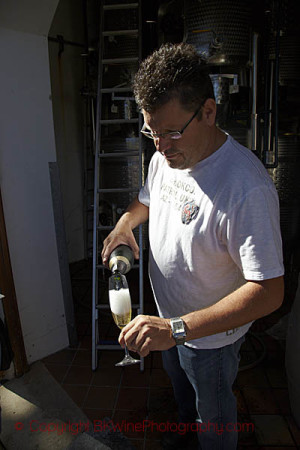 Method Cap Classique (MCC) is the name given to South African sparkling wine produced according to the traditional method, ie with a second fermentation in the bottle. The Cap Classique Producers Association (CCPA) was founded in 1992. The idea was to find a suitable name that would facilitate the marketing of the wines. To call the wines “Champagne” was no longer an option. Virtually all quality producers of MCC are now members of the association. The rules are tightened continuously and from the vintage 2019 the shortest ageing time on the lees will be increased from 9 months to 12. (Champagne has a minimum time on the lees of 12 months, and minimum 15 months in bottle.)
Method Cap Classique (MCC) is the name given to South African sparkling wine produced according to the traditional method, ie with a second fermentation in the bottle. The Cap Classique Producers Association (CCPA) was founded in 1992. The idea was to find a suitable name that would facilitate the marketing of the wines. To call the wines “Champagne” was no longer an option. Virtually all quality producers of MCC are now members of the association. The rules are tightened continuously and from the vintage 2019 the shortest ageing time on the lees will be increased from 9 months to 12. (Champagne has a minimum time on the lees of 12 months, and minimum 15 months in bottle.)
Some of our MCC favourites come from High Constantia, Topiary Wines, Thelema, Stony Brook, Simonsig, Saronsberg, MAN Family Wines, Rickety Bridge, GM & Ahrens and Creation Wines, but there are many more! Read more: capclassique.co.za
Join us on our fabulous wine tour to South Africa in February 2019 and taste lots of bubbly (and other wines too)!
In Spain, what to do with tipping, restaurant etiquette, transport, shopping etc
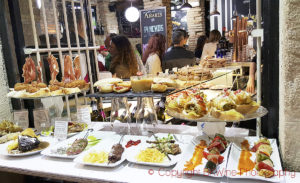 Handy tips on tipping customs, shopping hours, restaurant etiquette, taxi and transport, and more. One should perhaps not take too seriously rules about how to behave. On the other hand, it can be dangerous to be totally ignorant about local customs and traditions when travelling in a foreign country. So here are a few half serious, half light-hearted tips about how things work in Spain. What are the Spanish customs for tipping? How do you get a taxi? What should you do and not do in a restaurant or a café to get the best service? Etcetera.
Handy tips on tipping customs, shopping hours, restaurant etiquette, taxi and transport, and more. One should perhaps not take too seriously rules about how to behave. On the other hand, it can be dangerous to be totally ignorant about local customs and traditions when travelling in a foreign country. So here are a few half serious, half light-hearted tips about how things work in Spain. What are the Spanish customs for tipping? How do you get a taxi? What should you do and not do in a restaurant or a café to get the best service? Etcetera.
Read more on the BKWine wine tour blog: Spain FAQ: tipping, restaurants, transport, shopping.
There you can also find more useful Spanish information:
Sibling conflicts in Burgundy
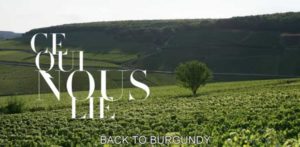 It is not as bad as it sounds… We wrote some time ago about the role of wine in French films. We asked our readers for recommendations of “wine movies” and one of our readers took us up on that. She recommends a film she watched a few months ago called “Ce qui nous lie”. The somewhat bland English title is “Back to Burgundy”. Our reader’s review of the film: “A nice, low-key movie about a French family with three children who, after the father’s death, inherit his vineyard. There are complications, of course, between the siblings, but with a positive ending. I enjoyed the film and its atmosphere.”
It is not as bad as it sounds… We wrote some time ago about the role of wine in French films. We asked our readers for recommendations of “wine movies” and one of our readers took us up on that. She recommends a film she watched a few months ago called “Ce qui nous lie”. The somewhat bland English title is “Back to Burgundy”. Our reader’s review of the film: “A nice, low-key movie about a French family with three children who, after the father’s death, inherit his vineyard. There are complications, of course, between the siblings, but with a positive ending. I enjoyed the film and its atmosphere.”
The film is made by director Cédric Klapisch with Pio Marmai, Ana Girardot, François Civil, Jean-Marc Roulot, and María Valverde. It is, of course, filmed on site in Burgundy. Real wine growers have helped the actors to look and speak the part. Thanks for the recommendation. Here you can see the trailer “Back to Burgundy” (with English subtitles). And even if it is fiction there is probably quite a lot of similarities with reality.
Australia’s most popular grape varieties
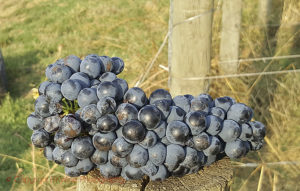 Nowhere else is the dominance of a few grape varieties as big as in Australia. Syrah, Cabernet Sauvignon and Chardonnay account for almost 60% of the total vineyard area of 149,000 hectares. Syrah alone accounts for 28% of the planted vines. But perhaps a diversification is in sight. Both Pinot Gris and Sauvignon Blanc are showing a strong increase. Also, some grapes belonging to the 20 per cent of “other grapes” are increasing.
Nowhere else is the dominance of a few grape varieties as big as in Australia. Syrah, Cabernet Sauvignon and Chardonnay account for almost 60% of the total vineyard area of 149,000 hectares. Syrah alone accounts for 28% of the planted vines. But perhaps a diversification is in sight. Both Pinot Gris and Sauvignon Blanc are showing a strong increase. Also, some grapes belonging to the 20 per cent of “other grapes” are increasing.
The 10 most planted grape varieties in Australia:
- Syrah, 40,000 ha
- Cabernet Sauvignon, 25,000 ha
- Chardonnay, 21,000 ha
- Merlot, 8,000 ha
- Sauvignon Blanc, 6,000 ha
- Pinot noir, 5,000 ha
- Sémillon, 5,000 ha
- Pinot Gris, 4,000 ha
- Riesling, 3,000 ha
- Muscat d’Alexandrie, 2,000 ha
- Other grapes, 30, 000 ha
Source: oiv.int
We currently don’t offer a wine tour to Australia, but we do to the neighbour, a wine tour to New Zealand.
Pinot Grigio Delle Venezie, new DOC for success grape Pinot Gris
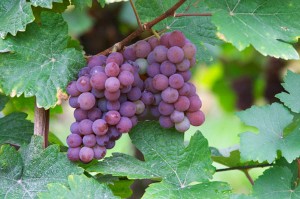 Nothing can stop Pinot Gris. Whichever country we are looking at the plantings of Pinot Gris is growing. Not least in Italy where the grape is called Pinot Grigio. Now there is a completely new appellation called DOC Pinot Grigio Delle Venezie. It covers all of the Northeast Italy, ie Friuli-Venezia-Giulia, Trentino-Alto Adige and Veneto. The aim of this new DOC is to protect and market the Italian Pinot Grigio, says the newly formed Consorzio Delle Venezie. Pinot Grigio and Glera (the Prosecco grape) are the two grapes in Italy which are currently increasing the most.
Nothing can stop Pinot Gris. Whichever country we are looking at the plantings of Pinot Gris is growing. Not least in Italy where the grape is called Pinot Grigio. Now there is a completely new appellation called DOC Pinot Grigio Delle Venezie. It covers all of the Northeast Italy, ie Friuli-Venezia-Giulia, Trentino-Alto Adige and Veneto. The aim of this new DOC is to protect and market the Italian Pinot Grigio, says the newly formed Consorzio Delle Venezie. Pinot Grigio and Glera (the Prosecco grape) are the two grapes in Italy which are currently increasing the most.
About 85% of all Italian Pinot Grigio will now belong to this DOC. Many of the wines were formerly IGT. The DOC has stricter requirements for lower yields for instance. Many of the wine estates are new and focus on innovation, technology and environmental issues, says the Conzorzio. There seems to be no end the Italian inventiveness for new appellations to respond to perceived market trends. Read more dellevenezie.it.
Marlborough growers want to differentiate between bulk and bottle
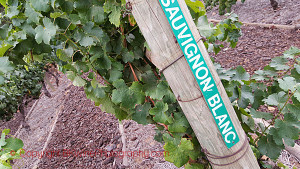 Sauvignon Blanc from Marlborough has made New Zealand famous in the wine world. As popularity has increased, the export of bulk wines from Marlborough has also increased. Some producers here are now concerned about the quality of these bulk wines and fear that in the long run, they can destroy Marlborough’s good reputation. These growers have therefore created a sort of a new appellation, Appellation Marlborough Wine, AMW.
Sauvignon Blanc from Marlborough has made New Zealand famous in the wine world. As popularity has increased, the export of bulk wines from Marlborough has also increased. Some producers here are now concerned about the quality of these bulk wines and fear that in the long run, they can destroy Marlborough’s good reputation. These growers have therefore created a sort of a new appellation, Appellation Marlborough Wine, AMW.
To be certified as AMW, the wines must be made from 100% Sauvignon Blanc from Marlborough. The normal rules allow for 15% of other grape varieties and/or grapes from other regions. And, very important, the wine must be bottled in New Zealand. The response has been positive and nearly 40 producers are already members. The initiators hope that the new appellation will enable the consumer to easily spot the quality wines. Perhaps not evident if the bulk wine can also be labelled Marlborough. Read more about AMW here winespectator.com.
To taste some of the top wines from Marlborough, and the rest of the country, you can join us on the wine tour to New Zealand.
More diversity with exciting wines from Chile
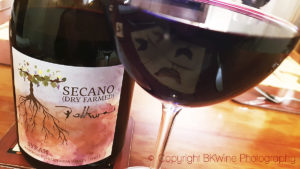 People often say wines nowadays tend to taste the same. But isn’t it exactly the opposite? Take the New World. A few years ago, one might have talked about sameness. A few grape varieties dominated and the taste of the wines seemed to follow a certain template. But today it is completely different. New varieties, new vineyard locations, brand new regions and, of course, new wine producers, show us new sides to these wine countries. Just look at Chile, once accused of being as boring and predictable as a Volvo. This is absolutely not true anymore. Just look at these wines, as different as they come. Exciting and personal wines to taste! And there are more of them out there.
People often say wines nowadays tend to taste the same. But isn’t it exactly the opposite? Take the New World. A few years ago, one might have talked about sameness. A few grape varieties dominated and the taste of the wines seemed to follow a certain template. But today it is completely different. New varieties, new vineyard locations, brand new regions and, of course, new wine producers, show us new sides to these wine countries. Just look at Chile, once accused of being as boring and predictable as a Volvo. This is absolutely not true anymore. Just look at these wines, as different as they come. Exciting and personal wines to taste! And there are more of them out there.
- Cacique Maravilla, Pipeño País 2017, Région del Sur, Secano Interior de Yumbel, ~10 euro
- Viejas Tinajas, Cinsault, 2015, De Martino, Région del Sur, Valle del Itata, ~20 euro
- Polkura Syrah 2014, Colchagua, ~18 euro
- Pirque Vineyard Lot #70, 2015, Garage Wine, Maipo, ~23 euro
- Vigno, Carignan Field-Blend, 2015, Garage Wine Maule, ~22 euro
- Montsecano Pinot Noir 2016, Chile, Aconcagua, ~28 euro
You can personally experience many of the fantastic Chilean wines on our wine tour to Chile and Argentina.
Tips and advice for when you travel in France, Spain, Italy, Chile, South Africa, Argentina
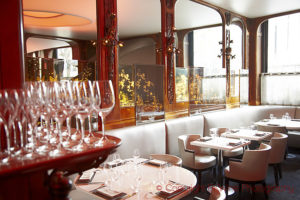 We continue to fill up with more info in the section we call “resources” on our travel site, BKWineTours.com. Here you can find tips and advice on how things work in different countries. For example, what to do with tipping and gratuities, restaurants etiquette and much more. Plus some info about the food of course. Invaluable info when going to a country you are not familiar with. (Or maybe even some new info for you who have travelled there before.) We now have:
We continue to fill up with more info in the section we call “resources” on our travel site, BKWineTours.com. Here you can find tips and advice on how things work in different countries. For example, what to do with tipping and gratuities, restaurants etiquette and much more. Plus some info about the food of course. Invaluable info when going to a country you are not familiar with. (Or maybe even some new info for you who have travelled there before.) We now have:
- Spain FAQ: tipping, restaurants, transport, shopping
- Italy FAQ: tipping, restaurants, transport, shopping
- Argentina FAQ: on tipping, transport, restaurants, currency, telecom etc
- Chile’s food: A quick introduction
- Chile FAQ: on tipping, transport, restaurants, currency, telecom etc
- France FAQ: tipping, restaurants, transport, shopping
This is also useful to put in your pocket when you come on one of BKWine’s wine tours, but then you get it automatically, printed in our exhaustive tour program booklet that we give all travellers.
A cooperative is the leader in organic wines in France
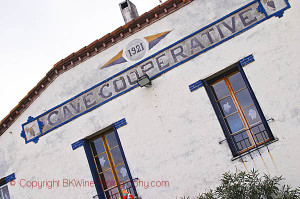 The cooperatives are many and significant players in the Languedoc. They account for a large proportion of the production here. But to survive in today’s competition, they, like everyone else, have to invest in what consumers want. For example, in organic wines. That’s what Cave Héraclès in the Gard in the eastern part of Languedoc has done. It is France’s largest producer of organic wines, but it is not a well-known name. Almost all of their production is sold to the négoce, including a big part to Gérard Bertrand. This is common practice. Many of the big négociant or supermarket brands are sourced from co-operatives.
The cooperatives are many and significant players in the Languedoc. They account for a large proportion of the production here. But to survive in today’s competition, they, like everyone else, have to invest in what consumers want. For example, in organic wines. That’s what Cave Héraclès in the Gard in the eastern part of Languedoc has done. It is France’s largest producer of organic wines, but it is not a well-known name. Almost all of their production is sold to the négoce, including a big part to Gérard Bertrand. This is common practice. Many of the big négociant or supermarket brands are sourced from co-operatives.
Héraclès started with organic farming in 1994 and now produces around 45,000 hl of organic wine a year (5.6 million bottles). Of this, 15,000 hl (1.8 million bottles) are without any added sulphites. In time for the harvest 2018 a new spectacular vinification plant was opened. Read more: vitisphere.com and caveau-heracles.com. (Heracles was a Greek hero, the son of Zeus and Alcmene. The Romans called him Hercules.)
Features
Features that we have published during the past month, with lots of reading for you.
An introduction to Maremma, the new kid on the block in Tuscany
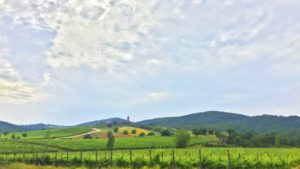 Discover the unknown Tuscany by the coast! Maremma is Tuscany’s Wild West. Horses and cowboys. Rolling fields, quaint villages and gorgeous white beaches by the crystal blue sea. But also a wine region that offers a wide variety of wines. Maremma was until not long ago an area that was avoided if one could. There were mainly bandits, pirates and malaria mosquitos. It is no wonder that the word Maremma is often used as an invective. But today Maremma is a popular area, especially in summer.
Discover the unknown Tuscany by the coast! Maremma is Tuscany’s Wild West. Horses and cowboys. Rolling fields, quaint villages and gorgeous white beaches by the crystal blue sea. But also a wine region that offers a wide variety of wines. Maremma was until not long ago an area that was avoided if one could. There were mainly bandits, pirates and malaria mosquitos. It is no wonder that the word Maremma is often used as an invective. But today Maremma is a popular area, especially in summer.
BKWine Magazine’s Åsa Johansson takes us to the wild vineyard landscape and to the wines: Maremma – the wild neighbour of the super-tuscans.
If you want to really experience the Italian wines you should come on a wine tour to Tuscany with BKWine.
How to make the best gin-and-tonic
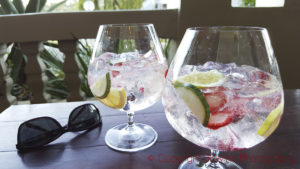 I imagine hardly anyone needs an instruction on how to make a Gin-and-Tonic, or G-and-T. Could it be the world’s most popular drink? But there are different ways to do it. For example, in this video, they use a blood grapefruit. Personally, I prefer a slice of lemon or lime. Some use cucumbers, blueberries and other things as well. You get a demonstration of how to do it on this video on BKWine Magazine from a bar in Logroño, Rioja, in northern Spain where they make a delicious gin-and-tonic. G&T has become hugely popular in Spain in recent years.
I imagine hardly anyone needs an instruction on how to make a Gin-and-Tonic, or G-and-T. Could it be the world’s most popular drink? But there are different ways to do it. For example, in this video, they use a blood grapefruit. Personally, I prefer a slice of lemon or lime. Some use cucumbers, blueberries and other things as well. You get a demonstration of how to do it on this video on BKWine Magazine from a bar in Logroño, Rioja, in northern Spain where they make a delicious gin-and-tonic. G&T has become hugely popular in Spain in recent years.
Join us on a wine tour to Rioja and enjoy their gin and tonic yourself at Café Ibiza, a chic bar on one of the big squares.
More on Maremma: Meet two of the producers on the Tuscan coast
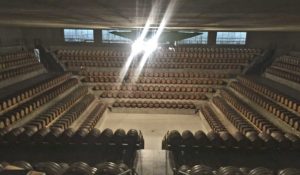 Antinori’s Le Mortelle and Rocca di Frassinello. Maremma is the new kid on the block in Tuscany. The region received its appellation as late as 2014. But it is a region with a history with ties back to the beginning of the “super-tuscans” in nearby Bolgheri. “When Antinori bought the land here in 1999, there was only fruit grown here, including six hectares of blueberries”, says Giorgia Dimitriou, winemaker at Le Mortelle, Marchesi Antinori’s vineyard in Maremma. Today the estate has 270 hectares of which 170 hectares are vineyards. Two hectares of blueberries have been kept.
Antinori’s Le Mortelle and Rocca di Frassinello. Maremma is the new kid on the block in Tuscany. The region received its appellation as late as 2014. But it is a region with a history with ties back to the beginning of the “super-tuscans” in nearby Bolgheri. “When Antinori bought the land here in 1999, there was only fruit grown here, including six hectares of blueberries”, says Giorgia Dimitriou, winemaker at Le Mortelle, Marchesi Antinori’s vineyard in Maremma. Today the estate has 270 hectares of which 170 hectares are vineyards. Two hectares of blueberries have been kept.
BKWine Magazine’s Åsa Johansson met two of the pioneers in the area: Meet two of the producers in Maremma on the Tuscan coast.
If you want to really experience the Italian wines you should come on a wine tour to Tuscany with BKWine.
VinNatur In Italy Sets Rules On How To Make Natural Wine | Britt on Forbes
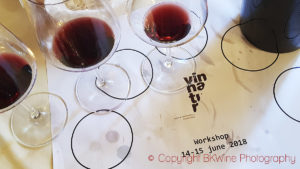 “Natural wine” is one of the trendiest segments on the hip wine scene these days. And it is making inroads on the consumer market. But one of the issues with this is that there is really no definition of what “natural wine” is, no agreed or accepted rules on how to make it. And the style varies hugely, from cider or barnyard smelling “funky” wines to “normal” wines. Some people are trying to change that. I recently met with Angiolino Maule who has created the organisation VinNatur in Italy.
“Natural wine” is one of the trendiest segments on the hip wine scene these days. And it is making inroads on the consumer market. But one of the issues with this is that there is really no definition of what “natural wine” is, no agreed or accepted rules on how to make it. And the style varies hugely, from cider or barnyard smelling “funky” wines to “normal” wines. Some people are trying to change that. I recently met with Angiolino Maule who has created the organisation VinNatur in Italy.
Read more on natural wines and VinNatur in Britt’s article on BKWine Magazine, originally published on Forbes: Will new rules make “natural wines” more normal? | Britt on Forbes.
Exciting rosé wine from Chile
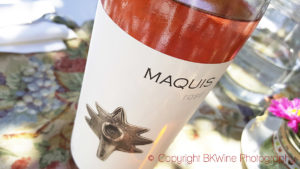 There is plenty of dull and uninteresting rosé wines around, and then there are some that stand out for their quality. At Vina Maquis in Colchagua in Chile, their aim is to make a rosé wine of top quality. They harvest the malbec grapes one month earlier than the “normal” red wine harvest. They also use some cabernet franc. They have also chosen grapes from the coolest parts of the vineyard. Their rosé is made without any technical correction, no acidification, not colour correction, no alcohol adjustment (enrichment / chaptalisation).
There is plenty of dull and uninteresting rosé wines around, and then there are some that stand out for their quality. At Vina Maquis in Colchagua in Chile, their aim is to make a rosé wine of top quality. They harvest the malbec grapes one month earlier than the “normal” red wine harvest. They also use some cabernet franc. They have also chosen grapes from the coolest parts of the vineyard. Their rosé is made without any technical correction, no acidification, not colour correction, no alcohol adjustment (enrichment / chaptalisation).
Read more on Viña Maquis in Per’s article, including a video with the winemaker, on BKWine Magazine, originally published on Forbes: Vina Maquis makes top-quality rosé wines in Chile, explained by the winemaker Rodrigo Romero | Per on Forbes.
There will be some rosé, but mainly reds and whites on our wine tour to Chile and Argentina. Join us on the tour!
A legendary French chef: Alain Senderens
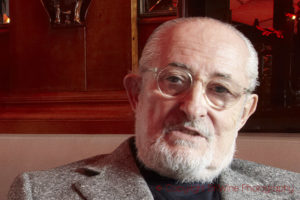 “Conversations with Alain Senderens” is a video series with one of the greatest chefs in France. Throughout his career Senderens was a pioneer in French cuisine and especially for the pairing of food and wine. He was one of the first (maybe the first?) to propose a “wine menu” with a different wine to each dish. It was Senderens who gave wine the place it deserved at the table. He also jostled and shocked the gastronomic establishment of France when, in 2005, he “returned” his three Michelin stars to make French haute cuisine more democratic.
“Conversations with Alain Senderens” is a video series with one of the greatest chefs in France. Throughout his career Senderens was a pioneer in French cuisine and especially for the pairing of food and wine. He was one of the first (maybe the first?) to propose a “wine menu” with a different wine to each dish. It was Senderens who gave wine the place it deserved at the table. He also jostled and shocked the gastronomic establishment of France when, in 2005, he “returned” his three Michelin stars to make French haute cuisine more democratic.
You can read, and watch the videos, of the first to instalments in the series with Senderens on BKWine Magazine:
Uncorked: Good wines we have tasted recently, Summer 2018
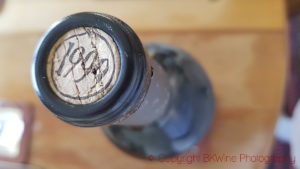 “Uncorked”: Under this heading, we collect various wines that we have tasted, and liked, recently. It can be wines that we have had during dinner at home, at wine tastings, press lunches, visits to vineyards, or other occasions. This month: Albariño from Spain and the slightly more unusual Savatiano from Greece. The wine world at the moment is brimming over with interesting white grapes. Two different styles of Syrah from Northern Rhône and a 25-year-old Cabernet Franc from the Loire with an incredible complexity. Interesting wines from Cyprus and Chile. And unoaked Chardonnay, we can’t get too much of that.
“Uncorked”: Under this heading, we collect various wines that we have tasted, and liked, recently. It can be wines that we have had during dinner at home, at wine tastings, press lunches, visits to vineyards, or other occasions. This month: Albariño from Spain and the slightly more unusual Savatiano from Greece. The wine world at the moment is brimming over with interesting white grapes. Two different styles of Syrah from Northern Rhône and a 25-year-old Cabernet Franc from the Loire with an incredible complexity. Interesting wines from Cyprus and Chile. And unoaked Chardonnay, we can’t get too much of that.
Read more on these and other wines on BKWine Magazine: Uncorked: Good wines we have tasted recently, Summer 2018.
Wine tours
Some information about current and future wine tours with BKWine.
Argentina and Chile is much, much more than Malbec and Carmenere | wine tour
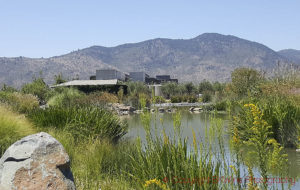 Malbec came to Argentina (from Chile!) already in 1850. It was faced with completely different growing conditions than it was used to from southwestern France, in Cahors. Not least a dry climate with only 200-300 mm of rain per year. But the grape adapted quickly.
Malbec came to Argentina (from Chile!) already in 1850. It was faced with completely different growing conditions than it was used to from southwestern France, in Cahors. Not least a dry climate with only 200-300 mm of rain per year. But the grape adapted quickly.
Already at the time, Mendoza was a major trading city. The wines were transported to Buenos Aires where they were much appreciated. As they still are today. And not only Malbec, but also the other grapes, such as the fresh and aromatic Torrontes. A grape you must discover! Or Cabernet Franc och Sauvignon Blanc in Chile. We will get to know many different grape varieties during our tour to Argentina and Chile, but it is even more exciting to get to know the ambitious wine producers.
Book your wine tour to Chile and Argentina now! Chile and Argentina, 20 January – 3 February 2019
South Africa is today one of the most exciting and dynamic wine countries | wine tour
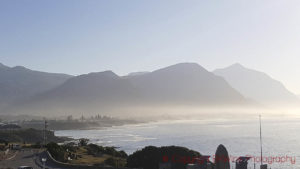 South Africa is a New World wine country, but with a long wine history. They celebrated 350 year anniversary as a wine country some years back. The sweet wines from Constantia were world famous already in the 18th century. The Dutchman Jan Van Riebeek planted the first vines outside of Cape Town in 1655 and four years later he made his first wine. And it has just continued after that.
South Africa is a New World wine country, but with a long wine history. They celebrated 350 year anniversary as a wine country some years back. The sweet wines from Constantia were world famous already in the 18th century. The Dutchman Jan Van Riebeek planted the first vines outside of Cape Town in 1655 and four years later he made his first wine. And it has just continued after that.
There have certainly been ups and downs when it comes to both volume and quality. But today we feel that the South African wine industry has entered a new phase with much experimentation with new grapes, new wine regions and new styles. A very exciting phase brimming with quality wine. And also the politics has entered a new and more stable phase.
Book your wine tour to South Africa now! South Africa, February 16-24, February 2019.
Discover New Zealand beyond sauvignon blanc, a spectacular wine country | wine tour
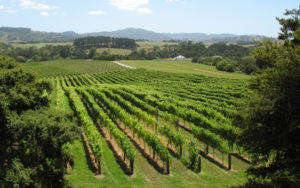 New Zealand is a very new wine country. It has emerged as a serious wine country with astonishing speed. Virtually an explosion of quality wines. The wine industry does not stop growing. Currently there are 38,000 hectares. Much is Sauvignon Blanc but other grapes are becoming more and more important, Pinot Noir not least, now the second most planted grape.
New Zealand is a very new wine country. It has emerged as a serious wine country with astonishing speed. Virtually an explosion of quality wines. The wine industry does not stop growing. Currently there are 38,000 hectares. Much is Sauvignon Blanc but other grapes are becoming more and more important, Pinot Noir not least, now the second most planted grape.
The conditions are good for wine growing with plenty of sunshine, just enough rain and it is not too hot. And the fact that the scenery is spectacular makes it all the more fabulous for the wine tourist. The tour in March 2019 to New Zealand is already fully booked. But we can offer you another one in November 2019. The weather will be mild and beautiful and the nature bursting with early summer colours.
Book your wine tour to New Zealand now, a very special experience! New Zealand, November 20 – December 5, 2019.
Don’t be an egoist! Share with your friends and other wine enthusiasts! Forward the Brief to your friends! Suggest that they sign up for a free subscription !
© Copyright BKWine







